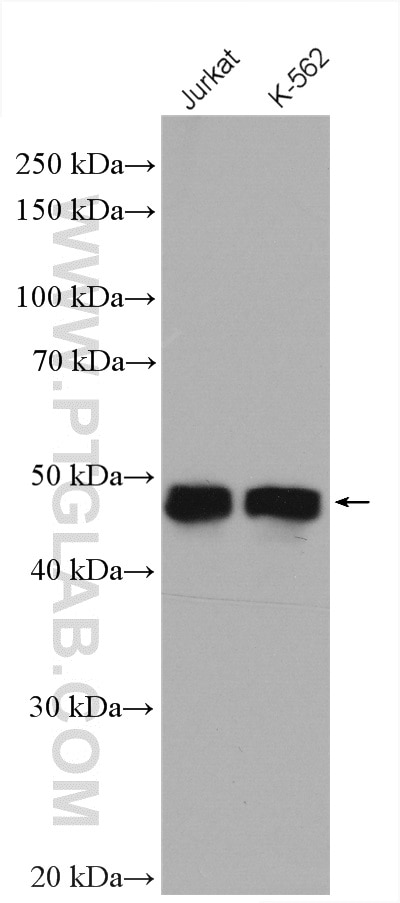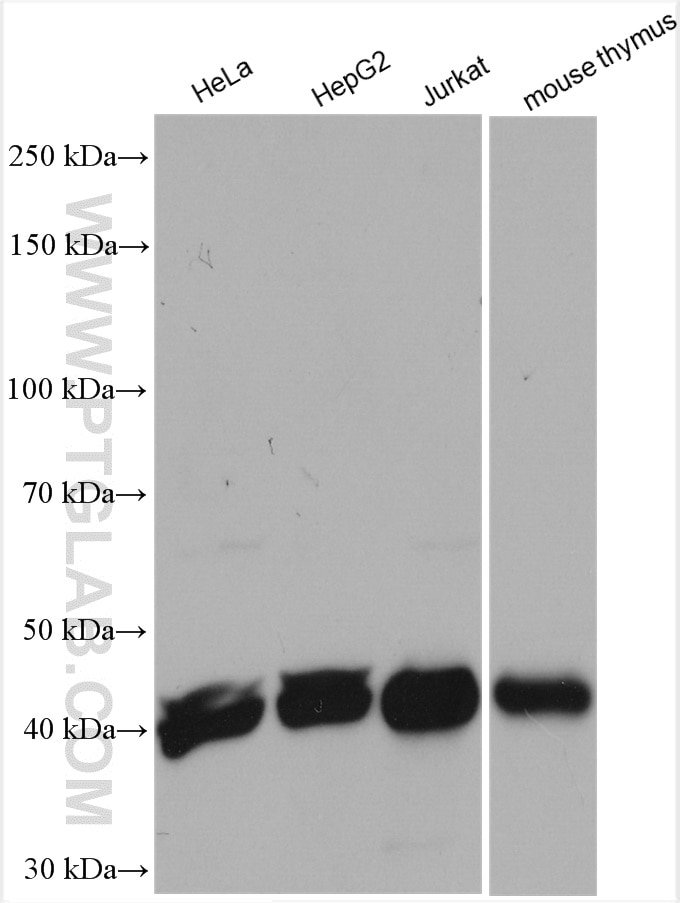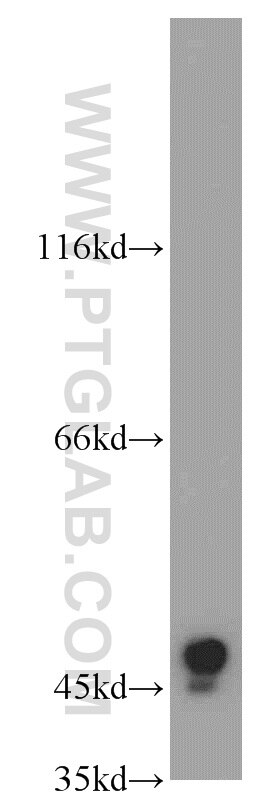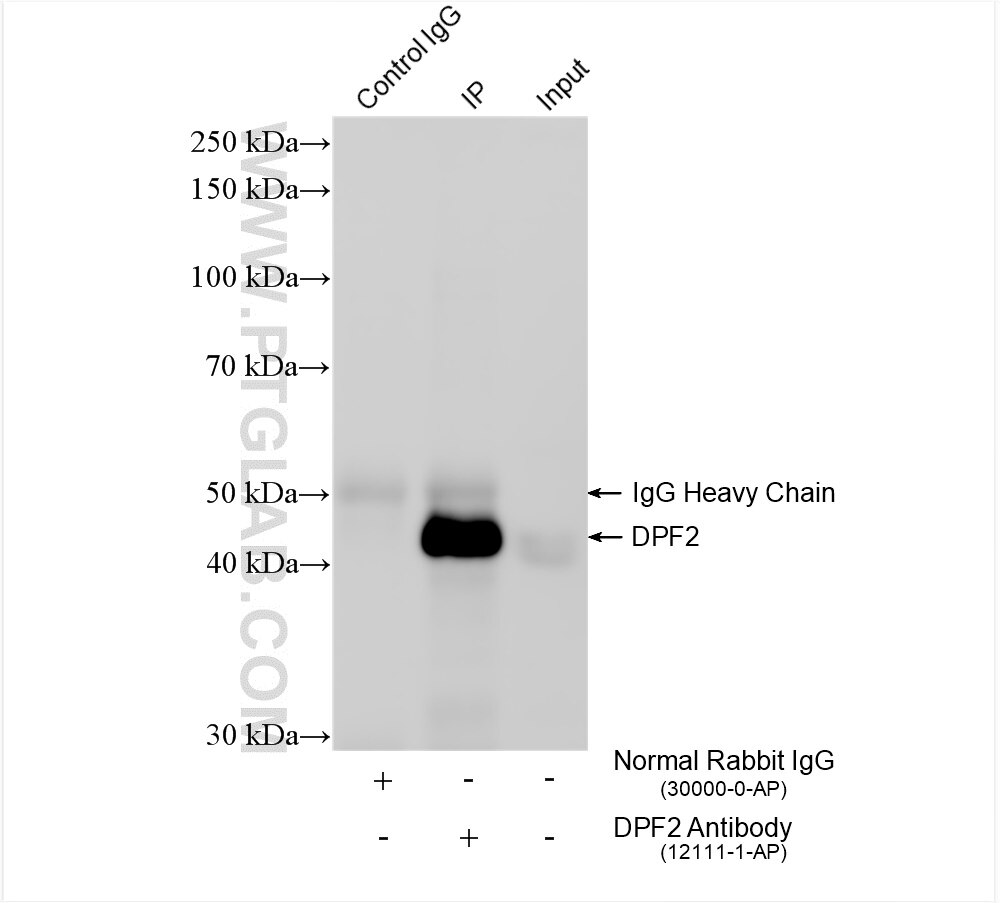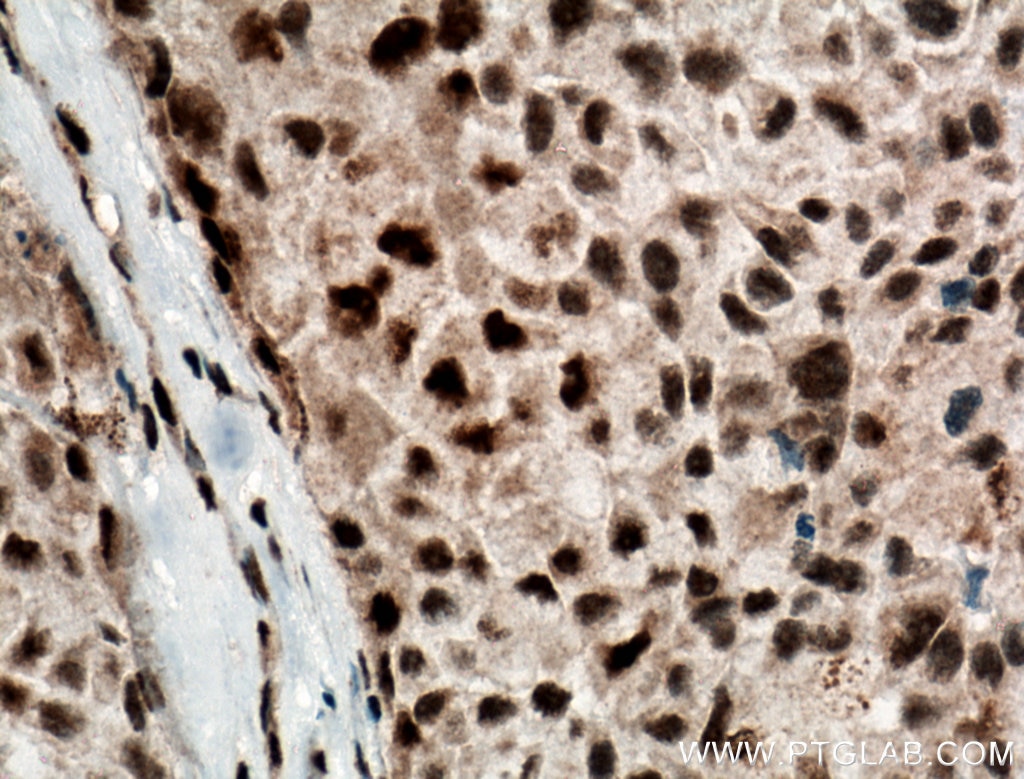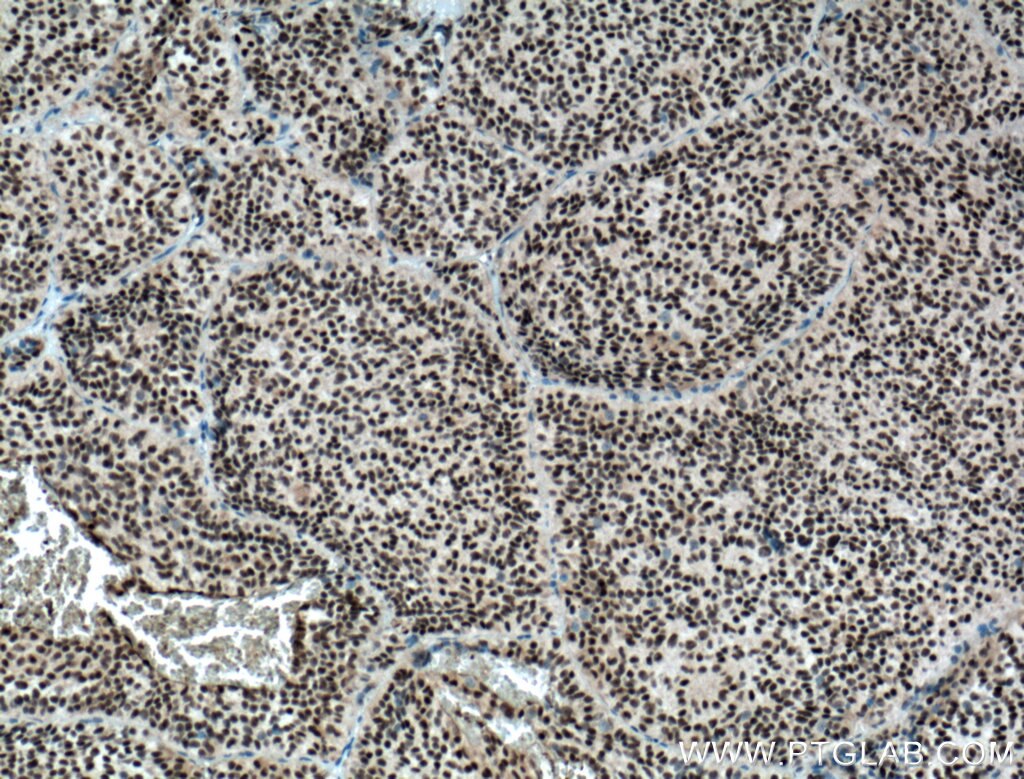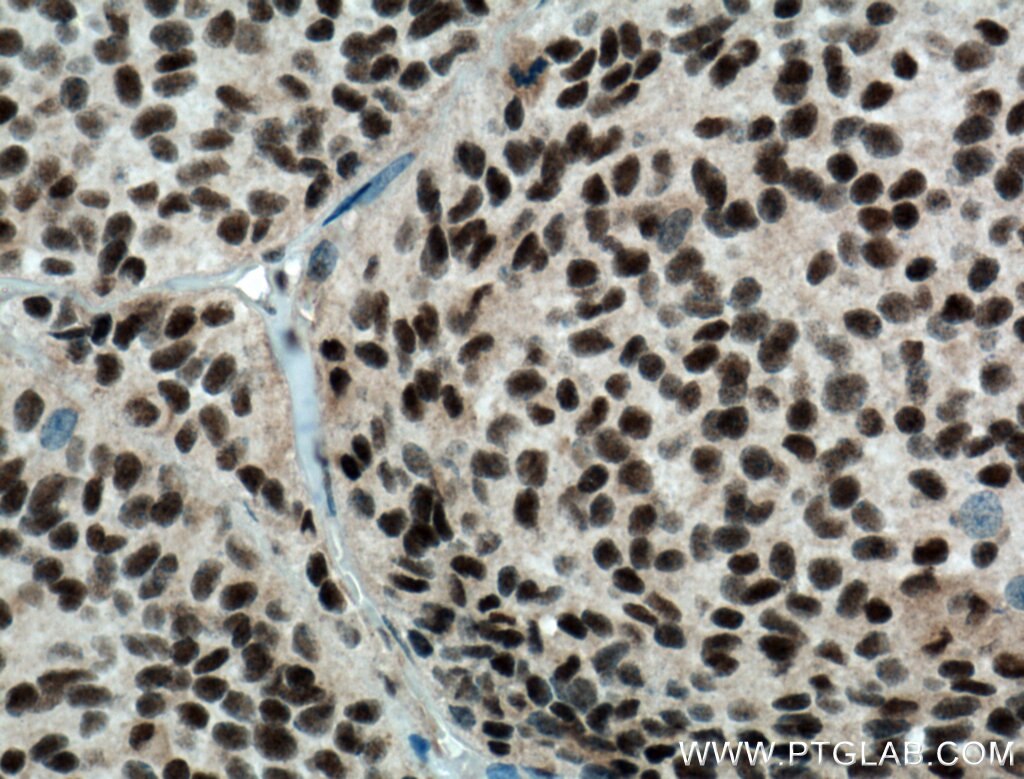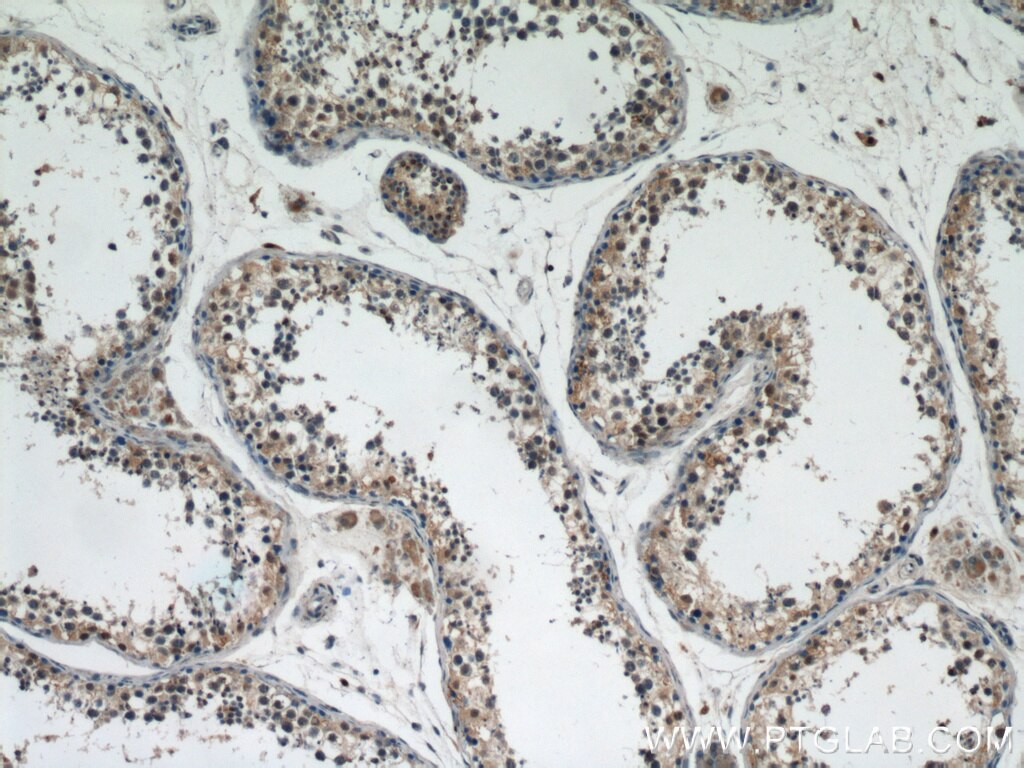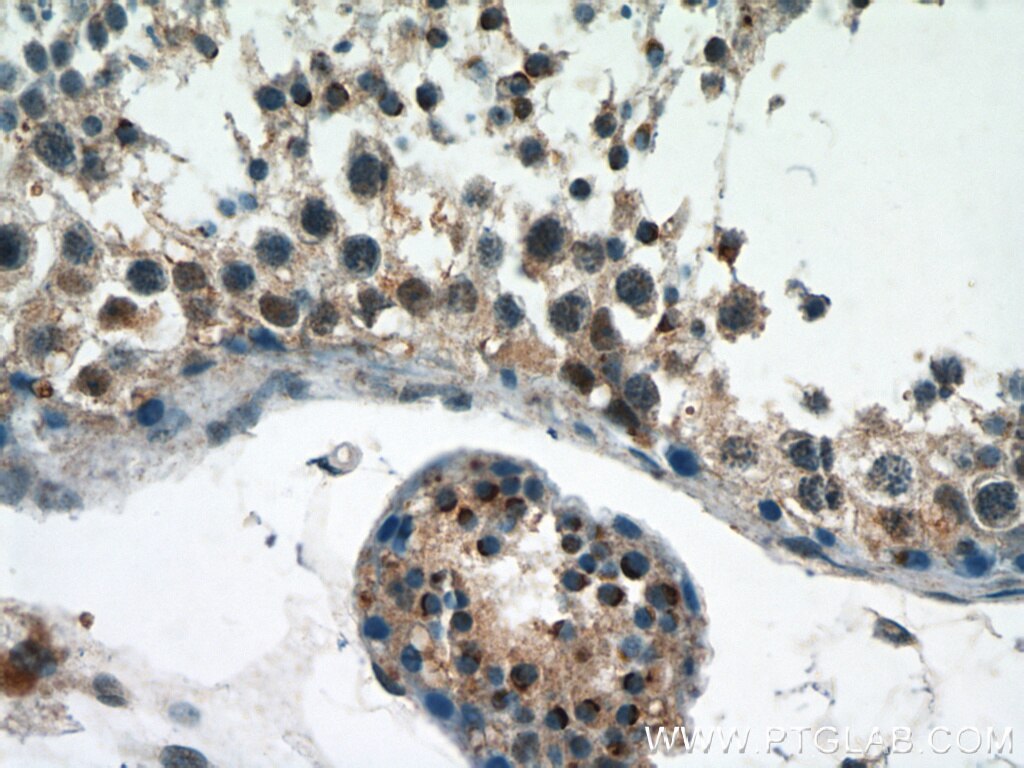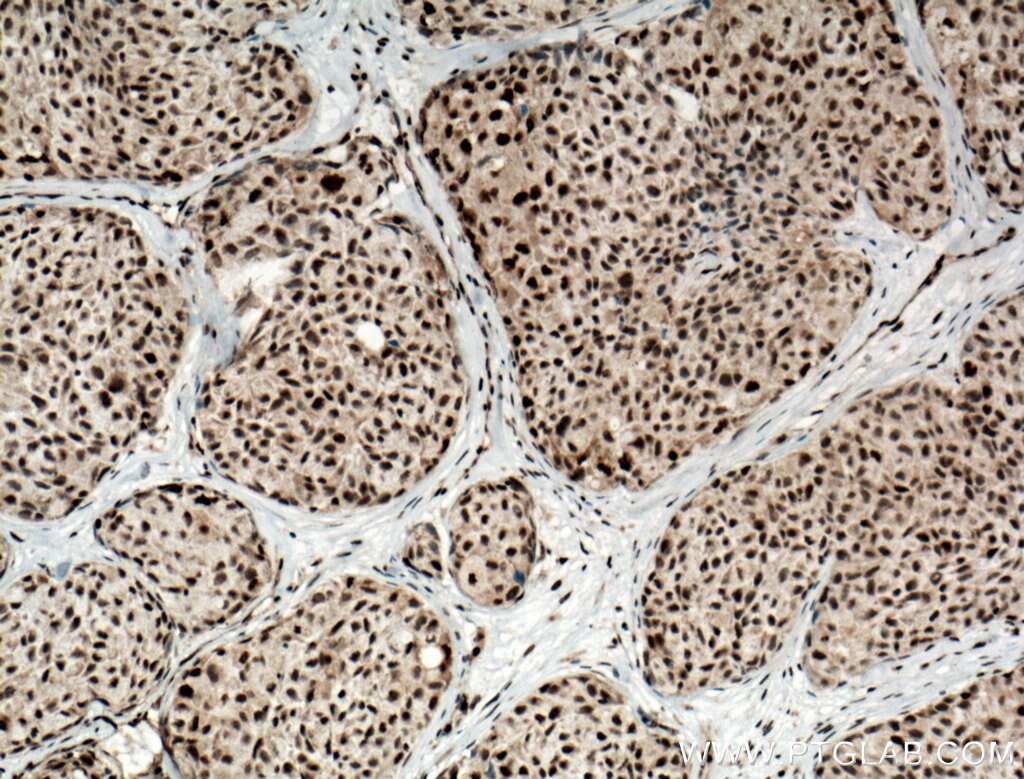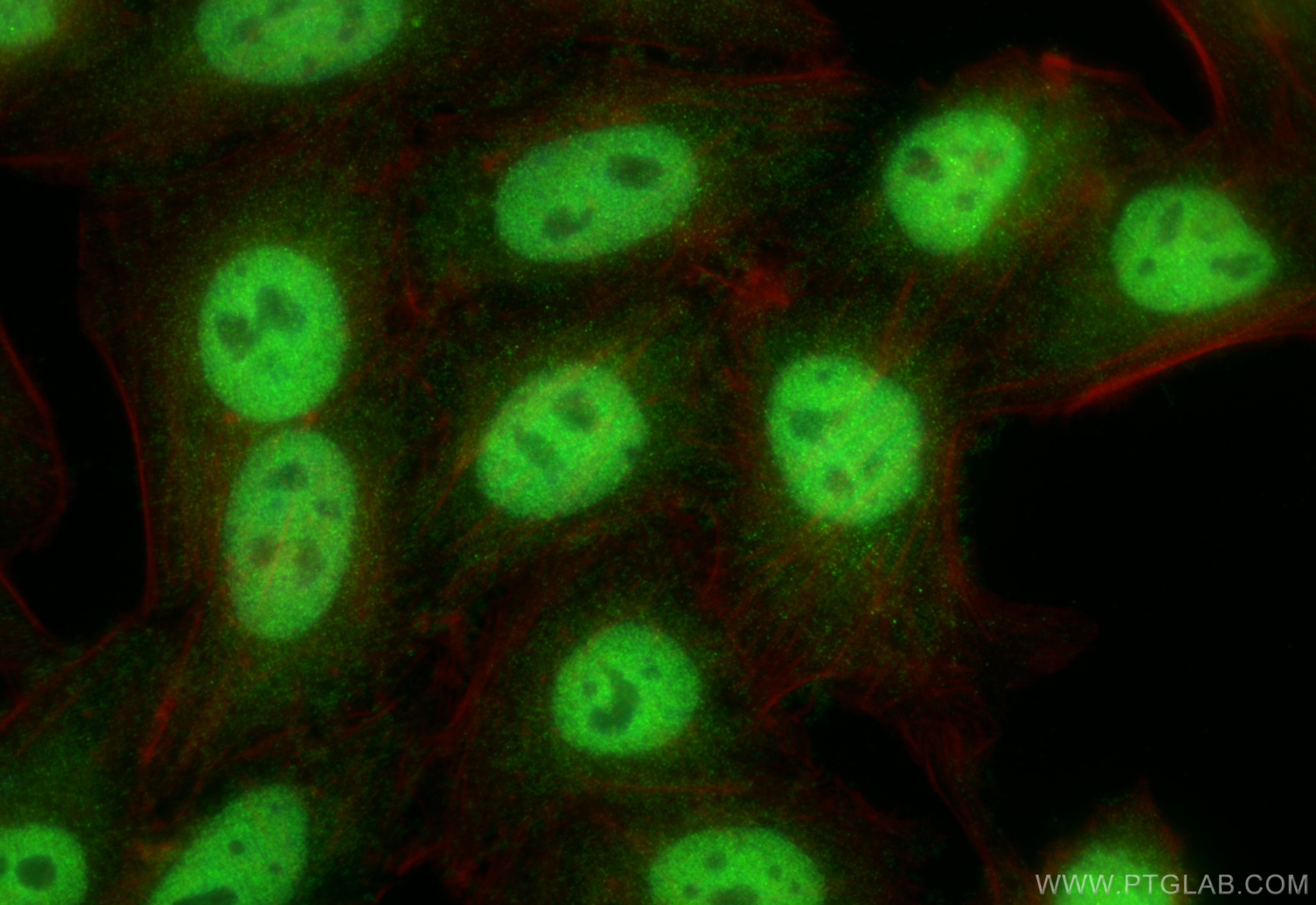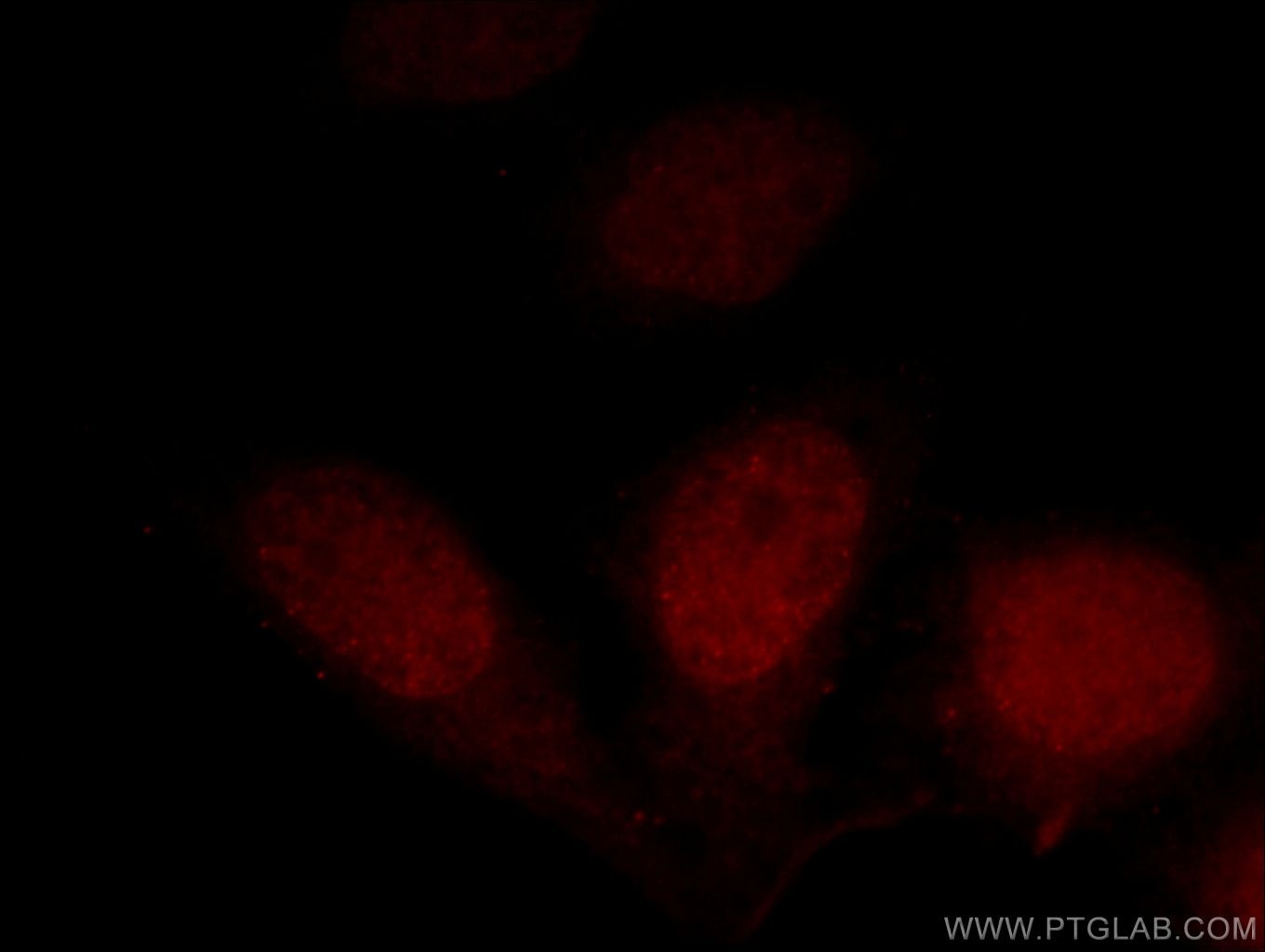- Phare
- Validé par KD/KO
Anticorps Polyclonal de lapin anti-DPF2
DPF2 Polyclonal Antibody for WB, IHC, IF/ICC, IP, ELISA
Hôte / Isotype
Lapin / IgG
Réactivité testée
Humain, rat, souris
Applications
WB, IHC, IF/ICC, IP, ELISA
Conjugaison
Non conjugué
N° de cat : 12111-1-AP
Synonymes
Galerie de données de validation
Applications testées
| Résultats positifs en WB | cellules Jurkat, cellules HeLa, cellules HepG2, cellules K-562, cellules Y79, tissu de thymus de souris |
| Résultats positifs en IP | cellules Jurkat, |
| Résultats positifs en IHC | tissu de cancer du poumon humain, tissu d'adénome hypophysaire humain, tissu testiculaire humain il est suggéré de démasquer l'antigène avec un tampon de TE buffer pH 9.0; (*) À défaut, 'le démasquage de l'antigène peut être 'effectué avec un tampon citrate pH 6,0. |
| Résultats positifs en IF/ICC | cellules HepG2, cellules HeLa |
Dilution recommandée
| Application | Dilution |
|---|---|
| Western Blot (WB) | WB : 1:1000-1:8000 |
| Immunoprécipitation (IP) | IP : 0.5-4.0 ug for 1.0-3.0 mg of total protein lysate |
| Immunohistochimie (IHC) | IHC : 1:50-1:500 |
| Immunofluorescence (IF)/ICC | IF/ICC : 1:200-1:800 |
| It is recommended that this reagent should be titrated in each testing system to obtain optimal results. | |
| Sample-dependent, check data in validation data gallery | |
Applications publiées
| KD/KO | See 3 publications below |
| WB | See 7 publications below |
| IHC | See 4 publications below |
| IF | See 6 publications below |
Informations sur le produit
12111-1-AP cible DPF2 dans les applications de WB, IHC, IF/ICC, IP, ELISA et montre une réactivité avec des échantillons Humain, rat, souris
| Réactivité | Humain, rat, souris |
| Réactivité citée | rat, Humain, souris |
| Hôte / Isotype | Lapin / IgG |
| Clonalité | Polyclonal |
| Type | Anticorps |
| Immunogène | DPF2 Protéine recombinante Ag2756 |
| Nom complet | D4, zinc and double PHD fingers family 2 |
| Masse moléculaire calculée | 391 aa, 44 kDa |
| Poids moléculaire observé | 44-50 kDa |
| Numéro d’acquisition GenBank | BC014889 |
| Symbole du gène | DPF2 |
| Identification du gène (NCBI) | 5977 |
| Conjugaison | Non conjugué |
| Forme | Liquide |
| Méthode de purification | Purification par affinité contre l'antigène |
| Tampon de stockage | PBS with 0.02% sodium azide and 50% glycerol |
| Conditions de stockage | Stocker à -20°C. Stable pendant un an après l'expédition. L'aliquotage n'est pas nécessaire pour le stockage à -20oC Les 20ul contiennent 0,1% de BSA. |
Informations générales
DPF2, also named as BAF45D or UBID4, is a 391 amino acid protein, which belongs to the requiem/DPF family. DPF2 may be a transcription factor required for the apoptosis response following survival factor withdrawal from myeloid cells and might also have a role in the development and maturation of lymphoid cells. DPF2 was recently shown to inhibit the myeloid differentiation of hematopoietic stem/progenitor and acute myelogenous leukemia cells.
Protocole
| Product Specific Protocols | |
|---|---|
| WB protocol for DPF2 antibody 12111-1-AP | Download protocol |
| IHC protocol for DPF2 antibody 12111-1-AP | Download protocol |
| IF protocol for DPF2 antibody 12111-1-AP | Download protocol |
| IP protocol for DPF2 antibody 12111-1-AP | Download protocol |
| Standard Protocols | |
|---|---|
| Click here to view our Standard Protocols |
Publications
| Species | Application | Title |
|---|---|---|
Anal Chem Deciphering the Interactome of Histone Marks in Living Cells via Genetic Code Expansion Combined with Proximity Labeling. | ||
J Cancer DPF2 overexpression correlates with immune infiltration and dismal prognosis in hepatocellular carcinoma | ||
Front Neurosci BAF45D Downregulation in Spinal Cord Ependymal Cells Following Spinal Cord Injury in Adult Rats and Its Potential Role in the Development of Neuronal Lesions.
| ||
Front Neuroanat The BAF45D Protein Is Preferentially Expressed in Adult Neurogenic Zones and in Neurons and May Be Required for Retinoid Acid Induced PAX6 Expression.
| ||
Biosci Biotechnol Biochem BAF45D knockdown decreases cell viability, inhibits colony formation, induces cell apoptosis and S-phase arrest in human pancreatic cancer cells.
|
